The Union of Soviet Socialist Republics[r] (USSR),[s] commonly known as the Soviet Union,[t] was a transcontinental country that spanned much of Eurasia from 1922 to 1991. It was the largest country in the world by area, extending across eleven time zones and sharing land borders with twelve countries.[u]
A successor state to the Russian Empire, the country was nominally organized as a federal union of fifteen national republics, the largest and most populous of which was the Russian SFSR;[v] in practice, both its government and its economy were highly centralized until its final years. It was the world's third-most populous country and Europe's most populous country. As a one-party state governed by the Communist Party of the Soviet Union, it was a flagship communist state. Its capital as well as its largest city was Moscow. Other highly urbanized centers were Leningrad, Kiev, Tashkent, and Baku.
The Soviet Union's roots lay in the October Revolution of 1917, which saw the Bolsheviks overthrow the Russian Provisional Government that formed earlier that year following the February Revolution that had dissolved the Russian Empire.
The new government, led by Vladimir Lenin, established the Russian Soviet Federative Socialist Republic (RSFSR),[w] the world's first constitutionally socialist state. The revolution was not accepted by all within the Russian Republic, resulting in the Russian Civil War between the Bolsheviks and the anti-communist Whites.
As the war progressed in the Bolsheviks' favor, the RSFSR began to incorporate land acquired from the war into various puppet states, which were merged into the Soviet Union in December 1922. Following Lenin's death in 1924, Joseph Stalin came to power, inaugurating a period of rapid industrialization and forced collectivization that led to significant economic growth, but also contributed to a famine between 1930 and 1933 that killed millions. The forced labour camp system of the Gulag was also expanded in this period.
During the late 1930s, Stalin conducted the Great Purge to remove actual and perceived opponents, resulting in mass death, imprisonment, and deportation. In 1939, the USSR and Nazi Germany signed a nonaggression pact despite their ideological incongruence; nonetheless, in 1941, Nazi Germany invaded the Soviet Union in the largest land invasion in history, opening the Eastern Front of World War II.
The Soviets played a decisive role in defeating the Axis powers in 1945, suffering an estimated 27 million casualties, which accounted for the majority of Allied losses. In the aftermath of the war, the Soviet Union consolidated the territory occupied by the Red Army, forming various satellite states, and undertook rapid economic development which cemented its status as a superpower.
Following World War II, ideological tensions with the United States eventually led to the Cold War. The American-led Western Bloc coalesced into NATO in 1949, prompting the Soviet Union to form its own military alliance, commonly known as the Warsaw Pact, in 1955. Neither side ever engaged in direct military confrontation, and instead fought on an ideological basis and through proxy wars.
In 1953, following Stalin's death, the Soviet Union undertook a campaign of de-Stalinization under the leadership of Nikita Khrushchev, which saw reversals and rejections of Stalinist policies. This campaign caused tensions with Communist China.
During the 1950s, the Soviet Union rapidly expanded its efforts in space exploration and took an early lead in the Space Race with the first artificial satellite, the first human spaceflight, the first space station, and the first probe to land on another planet (Venus). The Cuban Missile Crisis of October 1962 was the closest the Cold War came to escalating into full-scale nuclear war.
The 1970s saw a brief détente in the Soviet Union's relationship with the United States, but tensions emerged again following the Soviet invasion of Afghanistan in 1979. In 1985, the last Soviet leader, Mikhail Gorbachev, sought to reform the country through his policies of glasnost and perestroika. In 1989, various countries of the Warsaw Pact overthrew their Soviet-backed regimes, and nationalist and separatist movements erupted across the entire Soviet Union.
In 1991, amid efforts to reform and preserve the country as a renewed federation, an attempted coup d'état against Gorbachev by hardline communists prompted the three most populous and economically developed republics—Ukraine, Russia, and Belarus—to secede from the Union. On December 26, Gorbachev officially recognized the dissolution of the Soviet Union. Boris Yeltsin, the leader of the RSFSR, oversaw its reconstitution into the Russian Federation, which became the Soviet Union's successor state; all other republics emerged as fully independent post-Soviet states.
During its existence, the Soviet Union produced many significant social and technological achievements and innovations. It had the world's second-largest economy and largest standing military. An NPT-designated state, it wielded the largest arsenal of nuclear weapons in the world. As an Allied nation, it was a founding member of the United Nations as well as one of the five permanent members of the United Nations Security Council. Before its dissolution, the USSR was one of the world's two superpowers through its hegemony in Eastern Europe, global diplomatic and ideological influence (particularly in the Global South), military and economic strengths, and scientific accomplishments.
Etymology
Main article: Official names of the Soviet Union
See also: Names of Russia
The word soviet is derived from the Russian word sovet (Russian: совет), meaning 'council', 'assembly', 'advice',[x] ultimately deriving from the proto-Slavic verbal stem of *vět-iti ('to inform'), related to Slavic věst ('news'), English wise. The word sovietnik means 'councillor'.[5] Some organizations in Russian history were called council (Russian: совет). In the Russian Empire, the State Council, which functioned from 1810 to 1917, was referred to as a Council of Ministers.[5]
The Soviets as workers' councils first appeared during the 1905 Russian Revolution.[6][7] Although they were quickly suppressed by the Imperial army, after the February Revolution of 1917, workers' and soldiers' Soviets emerged throughout the country and shared power with the Russian Provisional Government.[6][8] The Bolsheviks, led by Vladimir Lenin, demanded that all power be transferred to the Soviets, and gained support from the workers and soldiers.[9] After the October Revolution, in which the Bolsheviks seized power from the Provisional Government in the name of the Soviets,[8][10] Lenin proclaimed the formation of the Russian Socialist Federal Soviet Republic (RSFSR).[11]
During the Georgian Affair of 1922, Lenin called for the Russian SFSR and other national Soviet republics to form a greater union which he initially named as the Union of Soviet Republics of Europe and Asia (Russian: Союз Советских Республик Европы и Азии, romanized: Sojuz Sovjetskih Respublik Evropy i Azii).[12] Joseph Stalin initially resisted Lenin's proposal but ultimately accepted it, and with Lenin's agreement he changed the name to the Union of Soviet Socialist Republics (USSR), although all republics began as socialist soviet and did not change to the other order until 1936. In addition, in the regional languages of several republics, the word council or conciliar in the respective language was only quite late changed to an adaptation of the Russian soviet and never in others, e.g. Ukrainian SSR.
СССР (in the Latin alphabet: SSSR) is the abbreviation of the Russian-language cognate of USSR, as written in Cyrillic letters. The Soviets used this abbreviation so frequently that audiences worldwide became familiar with its meaning. After this, the most common Russian initialization is Союз ССР (transliteration: Soyuz SSR) which essentially translates to Union of SSRs in English. In addition, the Russian short form name Советский Союз (transliteration: Sovjetskij Sojuz, which literally means Soviet Union) is also commonly used, but only in its unabbreviated form. Since the start of the Great Patriotic War at the latest, abbreviating the Russian name of the Soviet Union as СС has been taboo, the reason being that СС as a Russian Cyrillic abbreviation is associated with the infamous Schutzstaffel of Nazi Germany, just as SS is in English.
In English-language media, the state was referred to as the Soviet Union or the USSR. The Russian SFSR dominated the Soviet Union to such an extent that for most of the Soviet Union's existence, it was commonly, but incorrectly, referred to as Russia. According to historian Matthew White, it was an open secret that the country's federal structure was "window dressing" for Russian dominance. For that reason, the people of the USSR were almost always called "Russians", not "Soviets", since "everyone knew who really ran the show".[13]
History
Modern revolutionary activity in the Russian Empire began with the 1825 Decembrist revolt. Although serfdom was abolished in 1861, it was done on terms unfavourable to the peasants and served to encourage revolutionaries. A parliament, the State Duma, was established in 1906 after the Russian Revolution of 1905, but Emperor Nicholas II resisted attempts to move from absolute to a constitutional monarchy. Social unrest continued and was aggravated during World War I by military defeat and food shortages in major cities.
A spontaneous popular demonstration in Petrograd on 8 March 1917, demanding peace and bread, culminated in the February Revolution and the abdication of Nicholas II and the imperial government.[14] The tsarist autocracy was replaced by the social-democratic Russian Provisional Government, which intended to conduct elections to the Russian Constituent Assembly and to continue fighting on the side of the Entente in World War I. At the same time, workers' councils, known in Russian as 'Soviets', sprang up across the country, and the most influential of them, the Petrograd Soviet of Workers' and Soldiers' Deputies, shared power with the Provisional Government.[7][8] Membership of the Bolshevik party had risen from 24,000 members in February 1917 to 200,000 members by September 1917.[15] 50,000 workers had passed a resolution in favour of the Bolshevik demand for the transfer of power to the Soviets.[16][17]
The Bolsheviks, led by Vladimir Lenin, pushed for communist revolution in the Soviets and on the streets, adopting the slogan of "All Power to the Soviets" and urging the overthrow of the Provisional Government.[18][19] On 7 November 1917, Bolshevik Red Guards stormed the Winter Palace in Petrograd, arresting the Provisional Government leaders and Lenin declared that all power was now transferred to the Soviets.[10][8] This event would later be officially known in Soviet bibliographies as the "Great October Socialist Revolution". Bolshevik figures such as Anatoly Lunacharsky, Moisei Uritsky, and Dmitry Manuilsky agreed that Lenin's influence on the Bolshevik party was decisive but the October insurrection was carried out according to Trotsky's, not to Lenin's plan.[20] The initial stage of the October Revolution which involved the assault on Petrograd occurred largely without any human casualties.[21][22][23]
Lenin's government instituted a number of progressive measures such as universal education, universal healthcare, and equal rights for women.[24][25][26] Conversely, the bloody Red Terror was initiated to shut down all opposition, both perceived and real.[27] The terror also arose in response to a number of assassination attempts on Bolshevik senior leaders and organized insurrections against the Soviet government.[28][29][30]
In December, the Bolsheviks signed an armistice with the Central Powers, though by February 1918, fighting had resumed. In March, the Soviets ended involvement in the war and signed the separate peace Treaty of Brest-Litovsk.
A long and bloody Civil War ensued between the Reds and the Whites, starting in 1917 and ending in 1923 with the Reds' victory. It included foreign intervention, the murder of the former Emperor and his family, and the famine of 1921–1922, which killed about five million people.[31] In March 1921, during a related war against Poland, the Peace of Riga was signed, splitting disputed territories in Belarus and Ukraine between the Republic of Poland and Soviet Russia. Soviet Russia sought to re-conquer all newly independent nations of the former Empire, although their success was limited. Estonia, Finland, Latvia, and Lithuania all repelled Soviet invasions, while Ukraine, Belarus (as a result of the Polish–Soviet War), Armenia, Azerbaijan, and Georgia were occupied by the Red Army.[32][33] Additionally, the forced requisition of food by the Soviet government led to substantial resistance, of which the most notable was the Tambov Rebellion, ultimately put down by the Red Army.[34]
Russian Civil War in the European part of Russia
The Civil War had a devastating impact on the economy. A black market emerged in Russia, despite the threat of martial law against profiteering. The ruble collapsed, with barter increasingly replacing money as a medium of exchange[35] and, by 1921, heavy industry output had fallen to 20% of 1913 levels. 90% of wages were paid with goods rather than money.[36] 70% of locomotives were in need of repair[citation needed], and food requisitioning, combined with the effects of seven years of war and a severe drought, contributed to a famine that caused between 3 and 10 million deaths.[37] Coal production decreased from 27.5 million tons (1913) to 7 million tons (1920), while overall factory production also declined from 10,000 million roubles to 1,000 million roubles. According to the noted historian David Christian, the grain harvest was also slashed from 80.1 million tons (1913) to 46.5 million tons (1920).[38]
Treaty on the Creation of the USSR
On 28 December 1922, a conference of plenipotentiary delegations from the Russian SFSR, the Transcaucasian SFSR, the Ukrainian SSR, and the Byelorussian SSR approved the Treaty on the Creation of the USSR[39] and the Declaration of the Creation of the USSR, forming the Union of Soviet Socialist Republics.[40] These two documents were confirmed by the first Congress of Soviets of the USSR and signed by the heads of the delegations,[41] Mikhail Kalinin, Mikhail Tskhakaya, Mikhail Frunze, Grigory Petrovsky, and Alexander Chervyakov,[42] on 30 December 1922. The formal proclamation was made from the stage of the Bolshoi Theatre in Moscow.
An intensive restructuring of the economy, industry, and politics of the country began in the early days of Soviet power in 1917. A large part of this was done according to the Bolshevik Initial Decrees, government documents signed by Vladimir Lenin. One of the most prominent breakthroughs was the GOELRO plan, which envisioned a major restructuring of the Soviet economy based on total electrification of Russia.[43] The plan became the prototype for subsequent Five-Year Plans and was fulfilled by 1931.[44] After the economic policy of 'War communism' during the Russian Civil War, as a prelude to fully developing socialism in the country, the Soviet government permitted some private enterprise to coexist alongside nationalized industry in the 1920s, and total food requisition in the countryside was replaced by a food tax.
The Russian famine of 1921–22 killed an estimated 5 million people.
[45][46]
From its creation, the government in the Soviet Union was based on the one-party rule of the Communist Party (Bolsheviks).[y] The stated purpose was to prevent the return of capitalist exploitation, and that the principles of democratic centralism would be the most effective in representing the people's will in a practical manner. The debate over the future of the economy provided the background for a power struggle in the years after Lenin's death in 1924. Initially, Lenin was to be replaced by a 'troika' consisting of Grigory Zinoviev of the Ukrainian SSR, Lev Kamenev, of the Russian SFSR, and Joseph Stalin, of the Transcaucasian SFSR.
In February 1924, the USSR was recognized by the United Kingdom.[47][48] The same year, a Soviet Constitution was approved, legitimizing the December 1922 union.
According to Archie Brown the constitution was never an accurate guide to political reality in the USSR. For example, the fact that the Party played the leading role in making and enforcing policy was not mentioned in it until 1977.[49] The USSR was a federative entity of many constituent republics, each with its own political and administrative entities. However, the term 'Soviet Russia' – formally applicable only to the Russian Federative Socialist Republic – was often applied to the entire country by non-Soviet writers due to its domination by the Russian SFSR.
Stalin era (1927–1953)
Main article: History of the Soviet Union (1927–1953)
See also: Excess mortality in the Soviet Union under Joseph Stalin
The Soviet famine of 1930–1933, with areas where the effects of famine were most severe shaded
On 3 April 1922, Stalin was named the General Secretary of the Communist Party of the Soviet Union. Lenin had appointed Stalin the head of the Workers' and Peasants' Inspectorate, which gave Stalin considerable power.[50] By gradually consolidating his influence and isolating and outmaneuvering his rivals within the party, Stalin became the undisputed leader of the country and, by the end of the 1920s, established a totalitarian rule. In October 1927, Zinoviev and Leon Trotsky were expelled from the Central Committee and forced into exile.
In 1928, Stalin introduced the first five-year plan for building a socialist economy. In place of the internationalism expressed by Lenin throughout the revolution, it aimed to build Socialism in One Country. In industry, the state assumed control over all existing enterprises and undertook an intensive program of industrialization. In agriculture, rather than adhering to the 'lead by example' policy advocated by Lenin,[51] forced collectivization of farms was implemented all over the country.
Famines ensued as a result, causing deaths estimated at three to seven million; surviving kulaks (wealthy or middle-class peasants) were persecuted, and many were sent to Gulags to do forced labor.[52][53] Social upheaval continued in the mid-1930s. Despite the turmoil of the mid-to-late 1930s, the country developed a robust industrial economy in the years preceding World War II.
Construction of the bridge through the Kolyma (part of the Road of Bones from Magadan to Jakutsk) by the prisoners of Dalstroy
Closer cooperation between the USSR and the West developed in the early 1930s. From 1932 to 1934, the country participated in the World Disarmament Conference. In 1933, diplomatic relations between the United States and the USSR were established when in November, the newly elected President of the United States, Franklin D. Roosevelt, chose to recognize Stalin's Communist government formally and negotiated a new trade agreement between the two countries.[54] In September 1934, the country joined the League of Nations. After the Spanish Civil War broke out in 1936, the USSR actively supported the Republican forces against the Nationalists, who were supported by Fascist Italy and Nazi Germany.[55]
In December 1936, Stalin unveiled a new constitution that was praised by supporters around the world as the most democratic constitution imaginable, though there was some skepticism. American historian J. Arch Getty concludes: "Many who lauded Stalin's Soviet Union as the most democratic country on earth lived to regret their words. After all, the Soviet Constitution of 1936 was adopted on the eve of the Great Terror of the late 1930s; the "thoroughly democratic" elections to the first Supreme Soviet permitted only uncontested candidates and took place at the height of the savage violence in 1937. The civil rights, personal freedoms, and democratic forms promised in the Stalin constitution were trampled almost immediately and remained dead letters until long after Stalin's death."[56]
Five Marshals of the Soviet Union in 1935. Only two of them—Budyonny and Voroshilov—survived the Great Purge. Blyukher, Yegorov and Tukhachevsky were executed.
Stalin's Great Purge resulted in the detainment or execution of many 'Old Bolsheviks' who had participated in the October Revolution. According to declassified Soviet archives, the NKVD arrested more than one and a half million people in 1937 and 1938, of whom 681,692 were shot.[57] Over those two years, there were an average of over one thousand executions a day.[58][z] Scholars estimate the total death toll for the Great Purge (1936–1938), including fatalities attributed to prison conditions, to be roughly 700,000-1.2 million.[62][63][64][65][66]
In 1939, after attempts to form a military alliance with Britain and France against Germany failed, the Soviet Union made a dramatic shift towards Nazi Germany.[67] Almost a year after Britain and France had concluded the Munich Agreement with Germany, the Soviet Union made agreements with Germany as well, both militarily and economically during extensive talks. Unlike the case of Britain and France, the Soviet Union's agreement with Germany, the Molotov–Ribbentrop Pact (signed on 23 August 1939), included a secret protocol that paved the way for the Soviet invasion of Eastern European states and occupation of their territories.[68] The pact made possible the Soviet occupation of Lithuania, Latvia, Estonia, Bessarabia, northern Bukovina, and eastern Poland.
Stalin and Lavrentiy Beria with Stalin's daughter, Svetlana, on his lap. As head of the NKVD, Beria was responsible for many political repressions in the Soviet Union.
On 1 September, Germany invaded Poland and on the 17th the Soviet Union invaded Poland as well. On 6 October, Poland fell and part of the Soviet occupation zone was then handed over to Germany.
On 10 October, the Soviet Union and Lithuania signed an agreement whereby the Soviet Union transferred Polish sovereignty over the Vilna region to Lithuania, and on 28 October the boundary between the Soviet occupation zone and the new territory of Lithuania was officially demarcated.
On 1 November, the Soviet Union annexed Western Ukraine, followed by Western Belarus on the 2nd.
In late November, unable to coerce the Republic of Finland by diplomatic means into moving its border 25 kilometres (16 mi) back from Leningrad, Stalin ordered the invasion of Finland. On 14 December 1939, the Soviet Union was expelled from the League of Nations for invading Finland.[69] In the east, the Soviet military won several decisive victories during border clashes with the Empire of Japan in 1938 and 1939. However, in April 1941, the USSR signed the Soviet–Japanese Neutrality Pact with Japan, which the Soviets would unilaterally break in 1945, recognizing the territorial integrity of Manchukuo, a Japanese puppet state. The pact ensured Japan would not enter the war against the USSR on the side of Germany later.


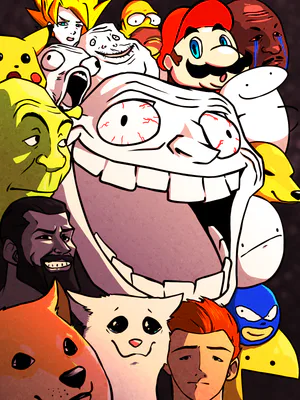
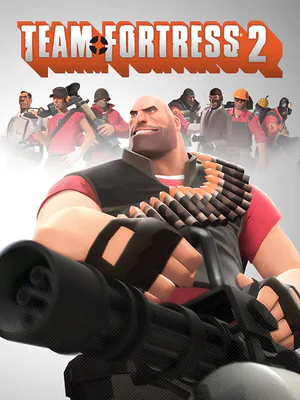


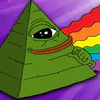
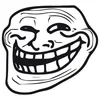



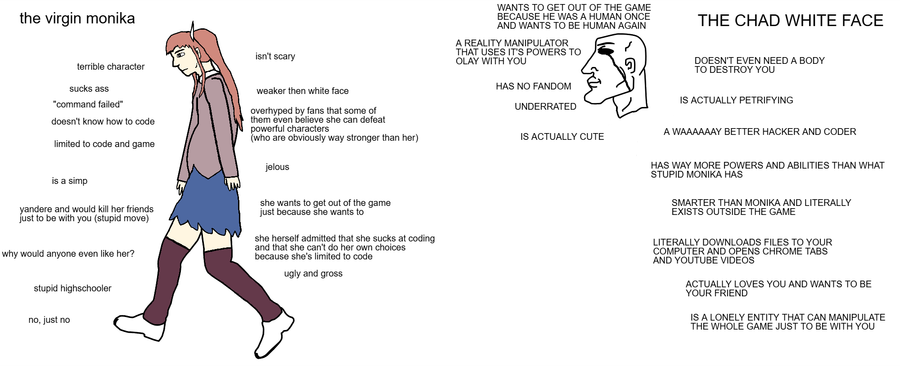






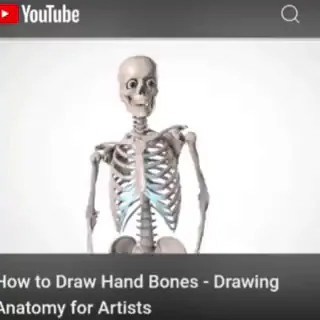
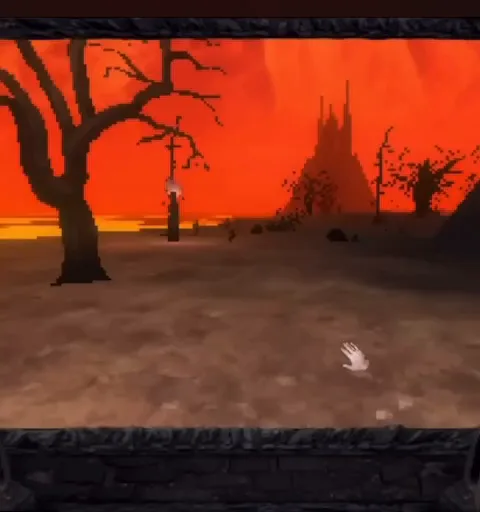
2 comments